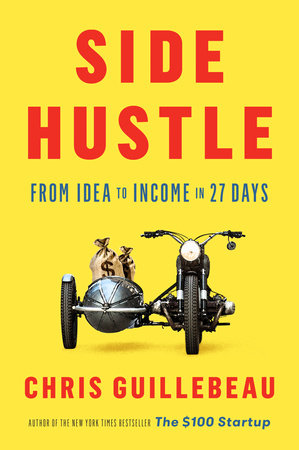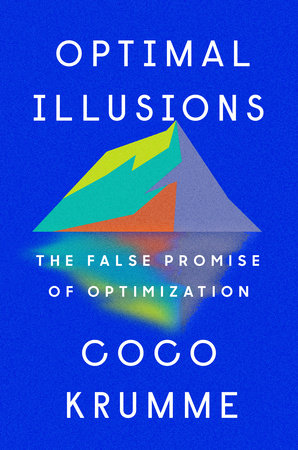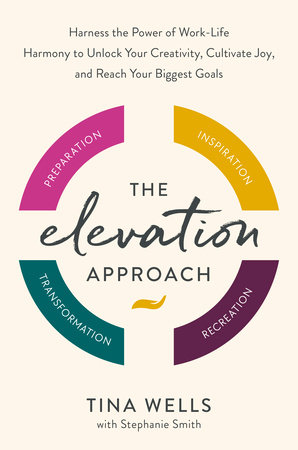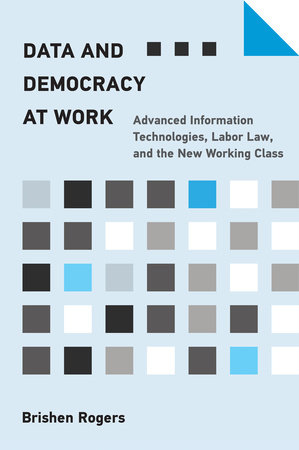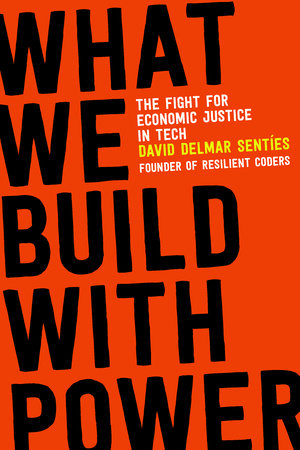Quick Summary
One sentence summary
“Hustle” by Jonas Koffler, Neil Patel, and Patrick Vlaskovits is a dynamic guide that empowers individuals to break free from the status quo and create their own paths to success through persistent effort and strategic play.
Big idea
The central premise of “Hustle” is that the traditional paths to success are no longer viable and that by embracing the hustle, we can generate more opportunities, gain more control over our lives, and inject passion into our day-to-day activities, ultimately leading to personal and professional fulfillment.
Five key ideas
- The Hustle Mindset: Adopting a mindset that favors action, creativity, and opportunity-seeking over passive acceptance of circumstances.
- The Power of Your Personal Agency: Understanding and leveraging your ability to act independently and make your own free choices to influence your life’s trajectory.
- The 10X Rule: Similar to Grant Cardone’s philosophy in “The 10X Rule,” the idea is to set targets that are 10 times greater than what you believe you can achieve and then take steps that are 10 times more ambitious than what you think is required.
- Strategic Side Projects: Like Chris Guillebeau discusses in “Side Hustle,” Koffler, Patel, and Vlaskovits advocate for the power of starting small, manageable side projects to explore new opportunities and build your brand.
- The Merits of Failing Fast: Learning from failure as a stepping stone to success, a concept also explored in Eric Ries’s “The Lean Startup,” where rapid iteration and feedback are critical.
Actionable advice
- Discover Your “Invisible Capital”: Inventory your unique skills, strengths, and experiences—your “invisible capital”—and leverage them to create new opportunities.
- Pursue Purpose with a Payoff: Align your passion with pragmatism; look for intersections where what you love to do meets a market need.
- Adopt the 7-Day Hustle: Set a short-term goal and for seven days, hustle hard to achieve it, which will build momentum and potentially yield surprising results.
About the author
Jonas Koffler is a creative media consultant, producer, and writer; Neil Patel is a prolific digital marketer and analytics expert; and Patrick Vlaskovits is an entrepreneur and the author of “The Lean Entrepreneur.” Together, they combine their diverse expertise to craft a book that redefines the concept of hustle in a contemporary world.
Read next
For those inspired by “Hustle” and looking to dive deeper into entrepreneurial strategies, “The $100 Startup” by Chris Guillebeau is an excellent next step, offering insights on launching a business on a budget. For a more focused approach on how to achieve extraordinary results, consider “The ONE Thing” by Gary Keller and Jay Papasan, which provides practical advice on narrowing your focus to boost productivity.
In Depth
The Hustle Mindset
Embracing the hustle mindset is all about shifting gears from being passive to becoming an active player in your own life. It’s a stance that involves seeing beyond the obvious, taking bold actions, and embracing the idea that we can shape our destinies through sheer will and persistence.
The hustle mindset is built on the belief that waiting for opportunities to knock is a game for the passive. Those who hustle create their own doors and then proceed to knock them down. It’s not just about working harder; it’s about working smarter and with a direction. In “Hustle,” the authors make it clear that having this mindset isn’t a luxury but a necessity in today’s fast-paced, ever-changing world.
A pivotal component of the hustle mindset is recognizing that the value we bring is not just in the hours we put in, but in our unique perspectives and skills. It’s about understanding that each individual has something distinct to offer and that by leveraging these unique traits, we can carve out our niche.
One detailed example from “Hustle” revolves around the story of a woman who turned her love for tea into a thriving business. Despite having a comfortable job, she felt unfulfilled and craved more from her career. She began exploring her passion for tea by starting a blog and sharing her knowledge. By consistently engaging with this side project, she built a substantial following. Eventually, she leveraged her audience to kickstart her own line of tea products. This wasn’t just about hard work; it was about working with a purpose and direction, capitalizing on her unique interest, and turning it into an opportunity.
The hustle mindset involves a crucial understanding: that your career is not just a series of jobs, but a platform for growth. As the authors put it:
“Your career is your business. You’re its CEO. It’s time to manage it accordingly.”
This quote encapsulates the essence of the hustle mindset. It urges readers to take charge of their careers as they would a business, making strategic decisions, taking calculated risks, and continuously seeking growth opportunities.
Furthermore, the hustle mindset rejects the traditional notion of ‘paying your dues’ in terms of time spent in a role or company. Instead, it encourages a merit-based progression. It’s not about the years you’ve logged but the impact you’ve made. This approach resonates in today’s gig economy, where freelancers and entrepreneurs measure success through achievements, not tenure.
Moreover, adopting the hustle mindset means being okay with uncertainty. It’s about being nimble and adaptable, qualities that are indispensable in a world where industries can change overnight. The hustle mindset prepares you for these shifts, allowing you to pivot and thrive where others might stumble and fall.
In sum, the hustle mindset isn’t about a relentless grind or mere busywork. It’s a multifaceted approach that combines ambition with intelligence, creativity with opportunity, and passion with action. By viewing your career as a continuous opportunity for innovation and growth, you create a dynamic and proactive approach to success that’s built for the modern era.
The Power of Your Personal Agency
Your personal agency is your ability to act on your own volition, shaping your life’s path without being at the mercy of circumstances. This key idea champions the notion that we’re not just bystanders in our lives but rather active participants who can assert control and direct the course of our careers and personal growth.
In “Hustle,” the authors argue that understanding and tapping into your personal agency means recognizing the choices and the control you have, even when it feels like you don’t have any. It’s about taking responsibility for where you’re at and where you’re headed. They insist that every small step taken is a part of exercising this agency, and it’s these steps that eventually accumulate into a journey of a thousand miles.
One narrative from the book that exemplifies this concept is about an immigrant who arrives in the U.S. with barely anything to his name. Instead of being overwhelmed by his lack of resources, he focuses on his ability to work hard and learn quickly. He starts with odd jobs, saves diligently, and keeps his eyes peeled for opportunities to improve his circumstances. Through a combination of night school and networking, he gradually transitions into better-paying roles. This journey wasn’t about luck; it was about recognizing and seizing control over his life choices and actions.
The power of personal agency lies in its defiance of helplessness. As the authors state:
“When you hustle, you’re asserting your personal agency. You’re not asking for permission. You’re not waiting for an invitation to the table. You’re setting your own table.”
This quote underlines the book’s stance that waiting for an external force to change your trajectory is a losing game. Instead, it is up to each individual to grab the wheel and steer.
Exercising personal agency also means being prepared to face failure. Failure, in the hustle mindset, isn’t a dead end; it’s feedback. It’s about taking setbacks in stride, learning from them, and using them as fuel to propel yourself forward.
This key idea is tightly interwoven with the concept of ‘invisible capital’ that the book discusses. Your skills, experiences, relationships, and even your failures constitute this capital. When you exercise your personal agency, you’re actually investing this capital into your endeavors, increasing the value of your personal stock in the marketplace of life.
The essence of personal agency is to act intentionally and with purpose. It’s the decision to navigate life actively, making choices that align with your goals and values. It’s understanding that you’re in the driver’s seat, and while you can’t control everything, you can certainly influence a lot more than you think.
The power of personal agency is transformative; it’s a reminder that the pen that writes your story is in your hands. It’s a call to action, encouraging readers to own their decisions, chart their paths, and, ultimately, hustle for the life they envision.
The 10X Rule
The 10X Rule is a concept borrowed from the eponymous book by Grant Cardone, which “Hustle” adapts to its narrative. It’s about setting targets ten times higher than what you think you can achieve and then doing ten times more than you think is necessary to get there. This isn’t about being unrealistic. It’s about stretching your limits and expanding what you consider possible.
In “Hustle,” the 10X Rule is not just a guideline—it’s a mentality that pushes you out of complacency. It’s the difference between being satisfied with the status quo and pushing for exponential results. By adopting this rule, you’re not just aiming for growth; you’re striving for a revolution in your personal and professional life.
A detailed example from the book illustrates this rule through the story of a freelance graphic designer. Initially, he’s picking up small one-off jobs, barely scraping by. Then he decides to 10X his vision. He doesn’t just look for more clients; he aims to build a brand. He starts creating his own online design courses, expanding his reach globally. By thinking bigger—10X bigger—he transforms his modest freelancing gig into a lucrative educational business.
The authors drive the point home with a compelling charge:
“When you set unimaginable goals and pair them with insane work ethic, you create a recipe for breakthroughs and achievements that once seemed out of reach.”
This quote encapsulates the essence of the 10X Rule. It’s not just about the hard work, but also the scale of your vision. When you combine outlandish goals with a relentless pursuit, the realm of possibility expands.
By 10Xing your goals, you also 10X your thinking. You go beyond conventional solutions and begin to think creatively, innovatively, and more strategically. This elevated thinking leads to more significant actions, and even if you fall short, you’ll still be far ahead of where you would have been with more conservative goals.
The 10X Rule is not without its challenges, though. It requires resilience and the willingness to confront more significant failures. But in the spirit of hustle, these failures are not setbacks. They’re stepping stones, lessons that refine your strategy and strengthen your resolve.
By daring to think bigger, you step into a realm where even partial success has a more significant impact than total success at a lesser goal. This approach shatters the ceiling of perceived potential and replaces it with a sky that’s wide open.
This key idea is about radical growth, and it serves as a powerful reminder: by multiplying your targets and efforts, you don’t just increase your chances of success—you redefine what success looks like.
Strategic Side Projects
The concept of Strategic Side Projects is a cornerstone in “Hustle.” It’s about the focused execution of small, manageable projects that serve as testing grounds for bigger ideas. These projects act as launch pads for greater opportunities, allowing you to explore your passions, test the market, and build your skillset without the risks associated with larger ventures.
In the book, the authors encourage readers to step outside their main line of work or study and invest in side projects that align with their interests and potential business opportunities. It’s not just about being busy with side gigs; it’s about intentional action that can open new doors.
A compelling case study in “Hustle” revolves around a software developer who leverages his passion for coding and gaming to create a mobile game app during his free time. Instead of committing to a risky and expensive endeavor, he focuses on this side project during weekends. With minimal investment, he’s able to launch a beta version of the game, gather user feedback, and iterate on the design. This small-scale project eventually catches the eye of a major gaming company, leading to a partnership that would have been unlikely through his regular job.
The authors convey the importance of this strategic approach with the following insight:
“Your side hustle is your laboratory. It’s where you can experiment with different interests and ideas on a small scale, with real-world feedback and consequences.”
This quote highlights that a side hustle isn’t merely a hobby—it’s an incubator for professional growth and real-world learning. It provides the empirical data necessary to make informed decisions about larger career moves.
Engaging in strategic side projects means that you’re taking the reins in diversifying your experience and expanding your portfolio. It’s a proactive step toward self-reliance, mitigating the risk inherent in relying solely on a primary income source or career path.
The value of these side hustles is not solely in their potential to become full-time pursuits but also in their capacity to enrich your primary work. They can develop your creativity, give you new perspectives, and even improve your problem-solving skills in your main job.
Strategic side projects can also be a low-stakes playing field for failure. In this arena, failure is less catastrophic but equally instructive, providing critical insights without the heavy penalties.
By promoting strategic side projects, “Hustle” redefines what it means to be industrious. It shifts the narrative from ‘busy for the sake of busy’ to ‘busy with a purpose.’ It’s about planting seeds that could potentially grow into something larger, all while enhancing your current career path.
In short, side hustles are a testbed for innovation, a part-time pursuit with the potential for full-time rewards, and a smart strategy in a world where the only constant is change.
Leverage Your Strengths
“Leverage Your Strengths” is a principle that the authors of “Hustle” emphasize as crucial to personal and professional growth. It’s about identifying what you’re inherently good at and using those abilities to propel yourself forward. Instead of wasting time trying to improve weaknesses, the focus should be on capitalizing on your natural talents and strengths.
The book suggests that by doubling down on what you excel at, you’ll not only perform better but also find greater satisfaction in your work. It’s a strategy for efficiency; leveraging your strengths gives you a competitive edge, enabling you to do more with less effort.
An illustrative example from “Hustle” tells the story of a salesperson with an exceptional knack for interpersonal relationships. She could connect with people instantly, making her clients feel understood and valued. However, her job required a significant amount of administrative work, which she found tedious and draining. Recognizing her strength in building relationships, she shifted her role to focus on client-facing activities, which led to increased sales and greater job satisfaction. She outsourced or delegated the paperwork to others who were better suited for those tasks.
The authors articulate the wisdom of this approach with the line:
“Play to your strengths. If you’re doing what you’re good at, work doesn’t feel like work.”
This quote encapsulates the liberating philosophy of leveraging your strengths. It’s a reminder that work can be enjoyable and fulfilling when it aligns with your natural talents.
The idea also encourages a reevaluation of conventional success metrics. Instead of comparing yourself to others, the focus is on your personal bests. When you operate from your strengths, you are more likely to excel and stand out.
By leveraging your strengths, you can also provide more value to others. You become the go-to person in your area of expertise, which can lead to more opportunities and a stronger personal brand. It’s about finding your niche and owning it.
Moreover, the authors of “Hustle” argue that this principle is not static; it’s dynamic. It involves constant self-assessment and the agility to adapt as your strengths evolve or as new ones are discovered.
The leverage-your-strengths mindset is also about smart collaboration. By recognizing what you’re good at, you can also identify what you’re not good at, which is just as important. This recognition allows for strategic partnerships where you can complement your abilities with the skills of others, resulting in a symbiotic and productive relationship.
In a nutshell, leveraging your strengths is not just about individual advancement; it’s about optimizing your performance and contribution to any endeavor. It’s a clarion call to stop being a jack-of-all-trades and instead, to become a master of some, harnessing the power of your best attributes to forge a path to success.
Actionable Advice
- Identify Your Interests: Write down what you love to do, even if it doesn’t seem immediately profitable. Passion fuels persistence.
- Set 10X Goals: Aim higher than you think you can achieve. Massive goals force you to think creatively and work more diligently.
- Start a Side Project: Choose a project related to your interests and skills. Let it be your experimental ground without the pressure of your main income source.
- Focus on Your Strengths: Determine what you’re good at and seek roles or projects that allow you to use those strengths.
- Network Smartly: Connect with people in your desired field. Offer value without expecting anything in return.
- Embrace Failure: See every setback as a lesson. Analyze what went wrong and use that knowledge to improve.
- Invest in Learning: Always be learning something new that can contribute to your hustle. This keeps you competitive and versatile.
- Take Action Daily: Do something every day that moves you closer to your goals. Consistency is key.
- Be Resilient: Persistence is often the only difference between success and failure. Keep pushing forward.
- Evaluate and Adjust: Regularly assess your progress and be willing to pivot if something isn’t working. Flexibility can lead to unexpected opportunities.
About the Author
Jonas Koffler is a creative media consultant, entrepreneur, and writer who co-authored the bestselling book “Hustle.” His work emphasizes disruptive innovation and the importance of hustle in today’s fast-paced world. Neil Patel, a giant in digital marketing, analytics, and conversion, has founded several successful online businesses and is recognized by Forbes and President Obama for his entrepreneurial prowess. Patrick Vlaskovits is an entrepreneur and the bestselling author of “The Lean Entrepreneur,” known for his expertise in lean startup methodologies and growth hacking. These authors share a belief in the transformative power of hard work, smart strategy, and adaptability in achieving success. They advocate for leveraging personal strengths and the pursuit of passion projects as pathways to fulfillment and prosperity. Their collective wisdom is drawn from personal experiences, making their insights both practical and motivational for aspiring hustlers.
Read These Next
You might like these similar books
- “The 4-Hour Workweek” by Timothy Ferriss
- “The $100 Startup” by Chris Guillebeau
- “Deep Work” by Cal Newport
- “The Lean Startup” by Eric Ries
- “Crush It!” by Gary Vaynerchuk
FAQ
Q: What is ‘Hustle’ about?
A: ‘Hustle’ is a book that explores how to break free from the status quo by working smarter, not just harder, and creating opportunities for success through innovation, strategy, and perseverance.
Q: Who should read ‘Hustle’?
A: It’s ideal for entrepreneurs, freelancers, and anyone looking to ignite their passion, turn it into action, and create a path for success in their professional and personal lives.
Q: What can I learn from ‘Hustle’?
A: You can learn the art of strategic side hustling, leveraging your strengths, the importance of networking, and how to turn setbacks into opportunities.
Q: How long is ‘Hustle’?
A: The length of ‘Hustle’ can vary by edition, but it typically ranges around 300 pages.
Q: Is ‘Hustle’ based on real-life experiences?
A: Yes, the authors draw from their personal journeys and those of other successful individuals to provide real-world advice and strategies.
Q: Can ‘Hustle’ help me if I’m not planning to start a business?
A: Absolutely. ‘Hustle’ offers advice on personal growth and career advancement that’s valuable even if you’re not an entrepreneur.

